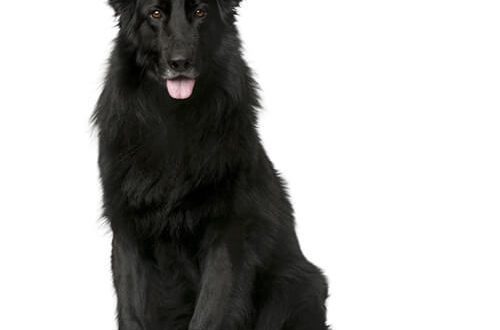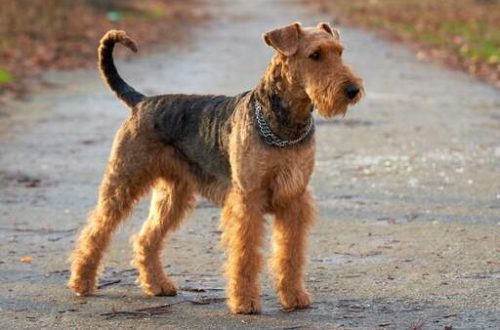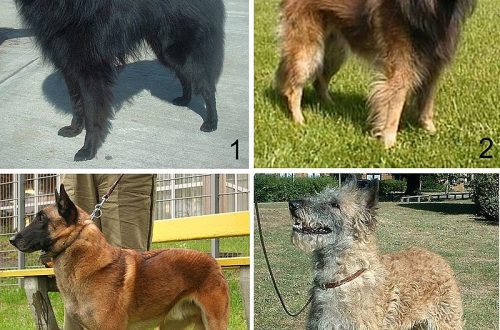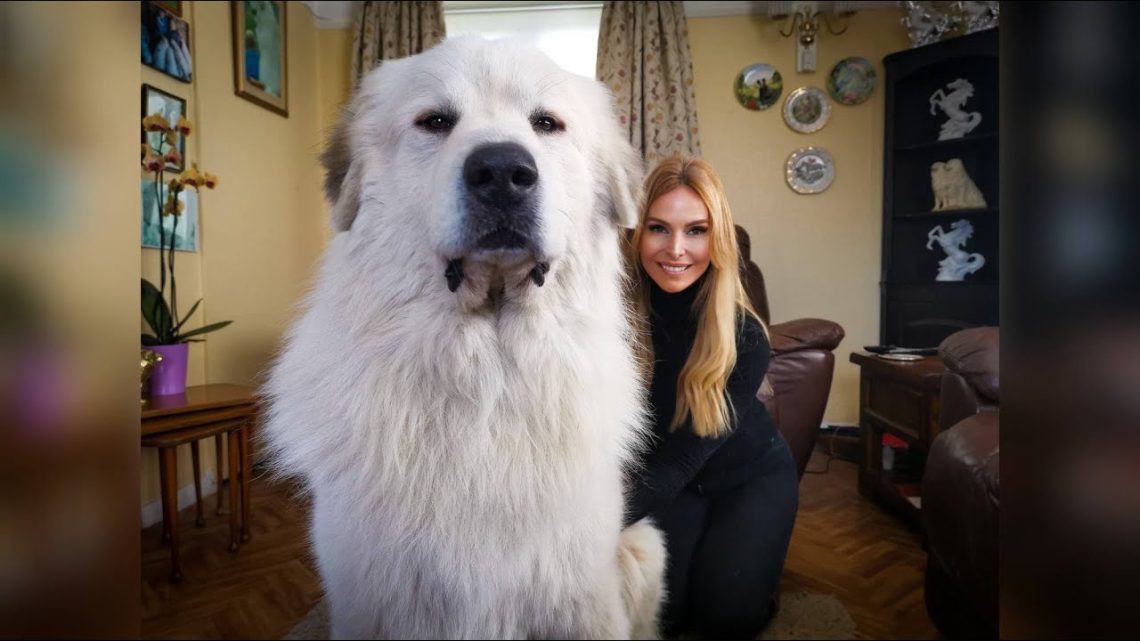
Pyrenean Mountain Dog (Great Pyrenees)
Other names: Great Pyrenees
The Pyrenean Mountain Dog (large Pyrenees) is a French breed of large dogs with shaggy white hair, previously involved in shepherd activities and protection of territories.
Contents
- Characteristics of Pyrenean Mountain Dog (Great Pyrenees)
- Basic moments
- History of the Pyrenean Mountain Dog breed
- Video: Pyrenean mountain dog
- Pyrenean mountain dog breed standard
- Personality of the Pyrenean Mountain Dog
- Education and training
- Maintenance and care
- Health and disease of the Pyrenean mountain dogs
- How to choose a puppy
- Pyrenean mountain dog price
Characteristics of Pyrenean Mountain Dog (Great Pyrenees)
| Country of origin | France |
| The size | Large |
| Growth | 65–80 cm |
| Weight | 45–60 kg |
| Age | 10–12 years old |
| FCI breed group | Pinschers and Schnauzers, Molossians, Mountain and Swiss Cattle Dogs |
Basic moments
- The breed has several informal names. For example, sometimes its representatives are called Pyrenean Mountain Dogs or simply Pyrenees.
- Distant relatives of the Pyrenees are the Turkish Akbash, the Hungarian Kuvasz and the Maremma-Abruzzo Sheepdog. According to cynologists, all four breeds once had a common ancestor.
- Distinctive features of the great Pyrenees are an intelligent, penetrating look (“Pyrenean expression of the eyes”) and a good-natured “smile”.
- Pyrenean mountain dogs love the water and are excellent swimmers, so they can be taken with you for a weekend near water bodies.
- A puppy should be educated and trained by a person who has basic skills in training large breeds.
- Pyrenean mountain dogs are strong-willed and independent creatures, therefore they are not eager to obey from the very first lessons.
- With some effort on the part of the owner, the Pyrenees are able to achieve good results in disciplines like agility and freestyle, although in the cynological environment, representatives of this family are not considered the most athletic pets.
- The breed is not suitable for keeping in apartments due to its impressive size and territorial instinct, which cannot be realized in conditions of limited space.
- In physiological and mental terms, the great Pyrenees reach full maturity only by the age of three.
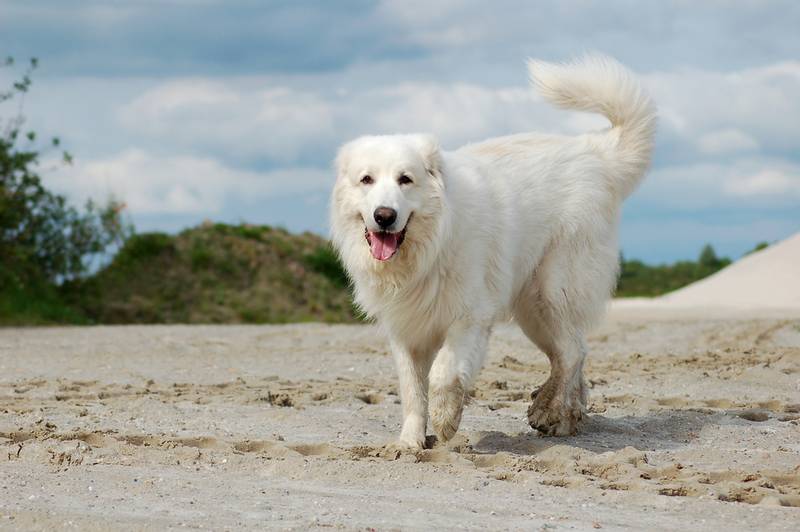
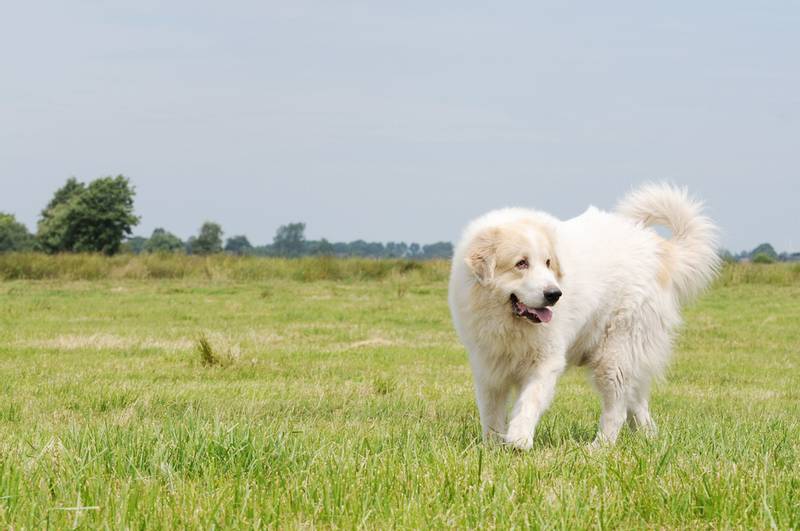
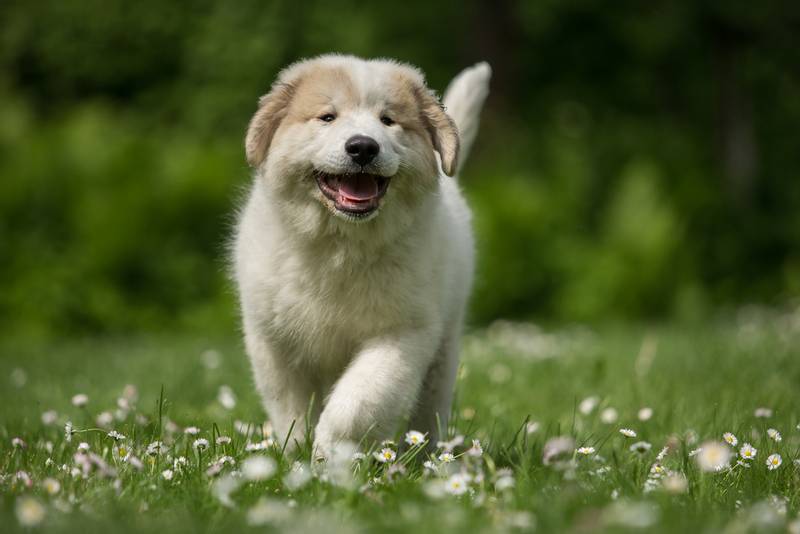
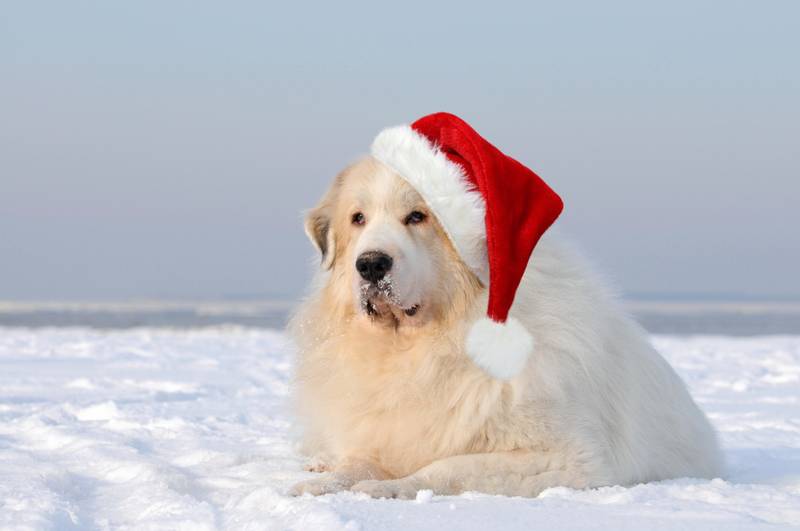
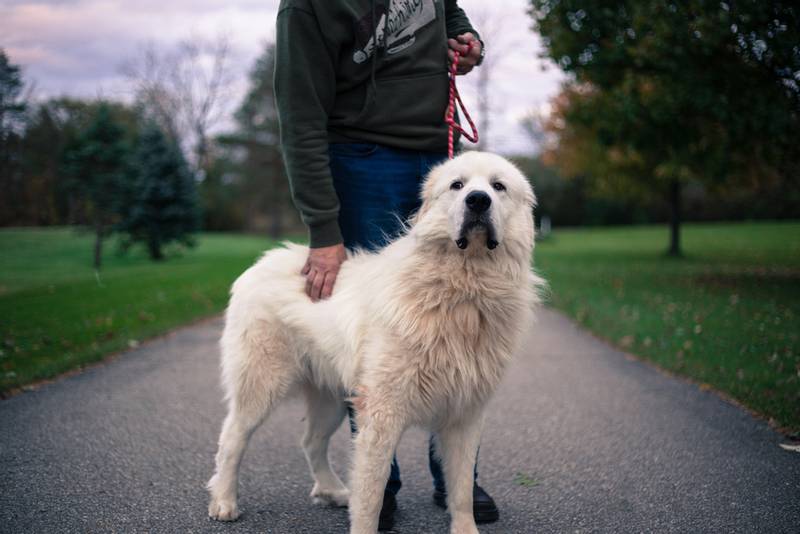
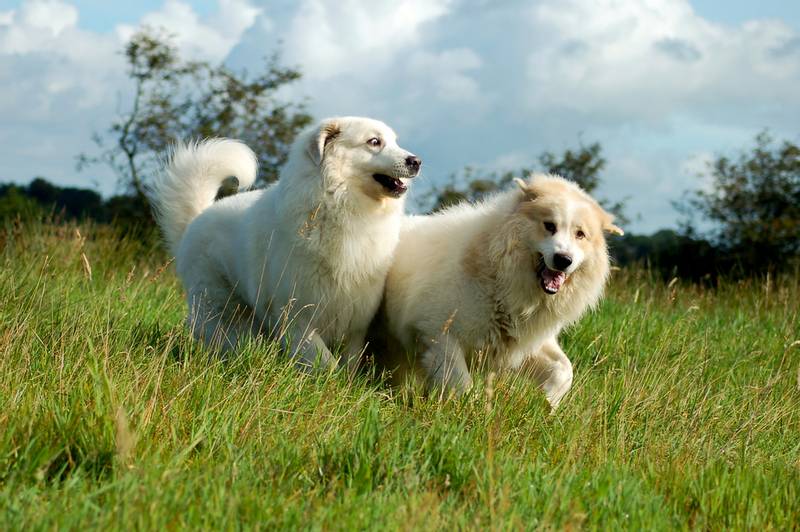
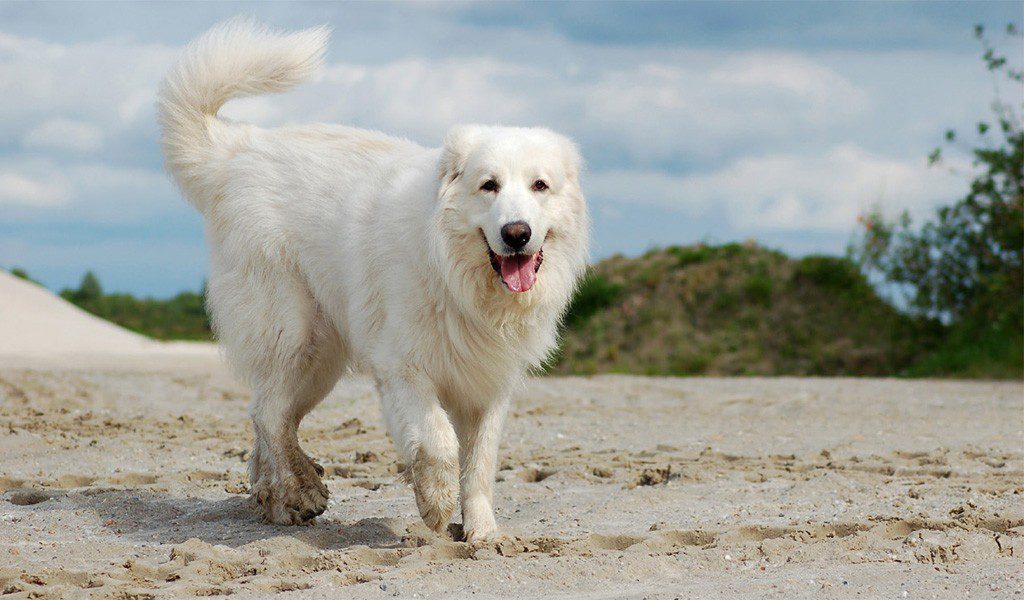
The Pyrenean Mountain Dog is the best friend of kids and an ideal patrol for the garden and yard, which even the most nimble mouse will not slip past unnoticed. Despite its elegant appearance, this snow-white brutal is unpretentious and moderately hardened, therefore it is able to live happily in a street kennel. The patience of the breed is also almost angelic: the Pyrenees agree to share their own possessions with any four-legged creatures, provided that the animals do not try to take away their guard status and do not pretend to be alpha.
History of the Pyrenean Mountain Dog breed
The genetic roots of the Pyrenean mountain dogs have been lost in the darkness of centuries, so it is not possible to establish their relationship with existing and extinct breeds. According to one version, the progenitors of the snow-white dogs were Tibetan Molossoid dogs, which since ancient times were crossed with local producers in the French part of the Pyrenees. Engaged in breeding experiments, mainly shepherds, who needed massive sensitive animals that could drive away hungry predators from sheep, or even enter into confrontation with them, so the character of the ancestors of the Pyrenees was Nordic, and their habits were fierce.
Mentions of the breed in printed sources have been found since the 14th century. One of the first descriptions of the appearance of the Pyrenean mountain dogs belongs to the abbot of the French monastery, Miguel Agustin, who at the same time explained why medieval breeders preferred individuals with white hair. According to the monk, the snow-white color helped the shepherd not to confuse the dog with the wolf. In addition, light-haired dogs were easier to find if they, carried away by the pursuit of predators, fought off the herd and got lost in the valleys.
By the end of the 17th century, the great Pyrenees had moved away from pastoral affairs and set about guarding feudal castles, which was facilitated by the enhanced PR of the breed by Madame de Maintenon. It was the mistress of Louis XIV who first brought to Versailles the amusing puppies of the Pyrenean mountain dog, who charmed all the palace nobility, including the young dauphin. In the 19th century, the population of predators in the mountainous regions of France declined, and the chambers of the nobles no longer needed four-legged guards, so the need for the services of working dogs disappeared. However, such transformations did not take the Pyrenees by surprise, because by that time they had successfully mastered a new niche – dog shows.
Prior to the preliminary standardization of the breed in 1923, its representatives were divided into two types: western and eastern. The Westerners were distinguished by their markedly Molossian appearance: they had large heads with pendulous lips and rounded ears, as well as a sparse wavy coat of white or black color. Dogs from the eastern regions of the Pyrenees looked more intelligent than their relatives in the group. The muzzles of the animals were of an elongated-pointed type, like the ears, and the soft thick wool had a solid snow-white color. In the early 1930s, Pyrenean mountain dogs began to be bred in the United States, and in 1933 the breed was registered by the American Kennel Club.
An interesting fact: in modern representatives of the Leonberger breed , along with the genes of the St. Bernards and Newfoundlands , the blood of the Pyrenean mountain dogs also flows.
Video: Pyrenean mountain dog
Pyrenean mountain dog breed standard
The reference representative of the breed must combine the two most important qualities – strength and elegance. On the one hand, the animal must have a strong constitution in order to terrify any animal with its formidable appearance. And on the other hand, to be energetic and frisky, so that, if necessary, to catch up with the attacker and deal with him. According to the type of physique, experts attribute the Pyrenees to wolf-molossians, without disputing the fact that wolf features in the exterior of the breed are predominant. The growth of the average male Pyrenean mountain dog is 80 cm. Females are slightly lower and smaller – about 65-75 cm at the withers. The “highlanders” also build up a decent muscle mass, so the weight bar of 55 kg for the breed is not considered something surprising and prohibitive.
Head
The Pyrenees mountain dogs have a harmoniously developed head with a rounded skull, flattened on both sides, and a flat stop. The superciliary ridges are not distinguished, the median furrow is not visually noticeable and is determined by touch. The muzzle of the animal is massive, well-filled and has the shape of a truncated wedge, which is somewhat shorter than the head.
Teeth, lips, jaws
A mandatory requirement for the breed is a complete and standard dental formula. Animal teeth without yellowness, healthy. The optimal type of bite is “scissors”, although a level bite and slightly forward incisors of the lower row are considered acceptable options. The lips of the dog are dense, not raw, black in color. The upper lip is slightly protruding and partially covers the lower jaw.
Nose
The nose is classically shaped with black skin.
Pyrenean Mountain Dog Eyes
Pyrenean mountain dogs have small almond-shaped eyes, slightly oblique, “Japanese”, set. The iris has an amber-brown tone, the eyelids tightly cover the eyeball. The look of the breed is intelligent, penetratingly thoughtful.
Ears
Miniature, triangular in shape, planted at eye level – something like this should look like the ears of a purebred descendant of Asian Molossians. The ear canopy is more often in a hanging position, but slightly “rises” when the dog is alert.
Neck
Large Pyrenees have short massive necks with slight dewlaps.
Pyrenean Mountain Dog Frame
The body has a somewhat stretched dimensions and is longer than the height of the dog at the withers. The back of the Pyrenees is long and massive, the sides are moderately tucked up, the withers are embossed. The croup is slightly sloping, the thighs are voluminous with excellently developed muscles, the chest is harmoniously developed, but not stretched in length or width.
limbs
The front legs of the representatives of the breed are even and strong, the hind legs are long, with abundant fringed hair. The shoulder blades of the animal are set slightly obliquely, the forearms are straight, the pasterns with a barely noticeable slope. The femoral part of the legs is massive, the hocks are wide with small angles, the shins are strong. Pyrenean mountain dogs have compact feet with slightly arched toes. They move sweepingly and measuredly, but without excessive heaviness.
Tail
In a true Pyrenean, the tail is feather-shaped, and its tip is at the level of the hocks. In a calm state, the dog lowers the tail down, while it is desirable that there is a slight bend at the end of the tail. In an excited dog, the tail rises above the croup, curling into a wheel and touching the line of the waist.
Wool
The coat of the Pyrenean Mountain Dog is profuse, straight, with a soft structure and an elastic dense undercoat. Relatively coarse hair grows on the shoulders and along the back; on the tail and neck, the coat is softer and longer. The tows are made of delicate airy wool.
Pyrenean Mountain Dog Color
Individuals of a solid white color look the most presentable, but the standard allows the breeding of Pyrenean mountain dogs of a white-gray color (wolf or badger type), as well as with yellowish and light rusty spots at the root of the tail, on the head and in the ears.
Disqualifying vices
External defects can affect the exhibition career of animals. For example, Pyrenean mountain dogs with the following exterior defects are not allowed to participate in exhibitions:
- light lobe and eyelids or painted in any color other than black;
- deformed jaws;
- overshot or undershot;
- yellow color of the iris;
- lack of dewclaws or their incomplete set;
- growth is more or less than the bar specified by the standard;
- unconventional color.
Personality of the Pyrenean Mountain Dog
Today’s representatives of the breed are no longer the shepherds of “lost sheep souls”, although they continue to be documented as working dogs with an excellently developed guarding instinct. The current generation of Pyrenees are smart and sensitive companions and watchmen, considering the human family as their own flock, which allows animals to quickly and without unnecessary stress accept the rules of the game dictated by the owner. And shaggy giants also love close physical contact, so if you are looking for a pet that is ready not only to endure your and children’s hugs, but also to come into sincere delight from them, then the Pyrenean mountain dog is the animal that you need.
Despite the emphasized brutal appearance, the Pyrenees belong to breeds with a reduced level of aggression. This means that this “blonde” is able to scare half to death a fox or a ferret that has jumped into your yard, but he will not adhere to the same tactics with respect to two-legged violators of the order. At the same time, the breed does not favor strangers, which is quite understandable. Since ancient times, suspicious personalities have been spinning near the sheepfolds, ready to snatch a well-fed lamb, so the task of the animal was to resist such lovers of free roast.
The Pyrenees are extremely child-loving, therefore they will not stoop to a conflict with some kind of toddler, even if the latter clearly abuses the good nature of the dog. Moreover, if a young mischievous person is in danger from another animal or person, the shaggy “guardian” will immediately respond to this. Another feature of the breed is a hypertrophied territorial instinct, thanks to which the pet considers its own territory not only the house in which it lives, but also locations where it is noted from time to time, for example, a public garden where the owner walks it. Therefore, if the Pyrenean mountain dog does not sleep and does not dine, then it almost certainly patrols the possessions entrusted to it, looking out for encroachers on the master’s wealth.
Ownership habits and territorial claims of the Great Pyrenees in no way infringe on the rights and freedoms of other domestic animals. The breed is not averse to sharing its habitat with cats, other dogs, and especially artiodactyls, which are in such need of a powerful protector. Even if you are a big fan of hamsters and other miniature furries, you can not worry about their life and health. It would not occur to the Pyrenean mountain dog to catch and eat even a rodent asking for it. But shaggy giants are able to accidentally step on a gaping tiny lump with a massive paw, so be extremely vigilant, allowing the hamster to walk under the feet of a larger pet.
Education and training
The complexity of raising the breed lies in the desire of its representatives for self-sufficiency and independence. Historically, Pyrenean mountain dogs were not trained, relying on their protective territorial instincts, which could not but affect the character of modern individuals. At the same time, one should not assume that the Pyrenees are hard to absorb knowledge. On the contrary, they are quick-witted and almost immediately understand what is expected of them. But these comrades are in no hurry to fulfill the requirements, preferring to slightly annoy the owner with their feigned misunderstanding of the situation.
When organizing the process of training a Pyrenean mountain dog, start with self-discipline and never approach the matter with a bad mood – the pet will quickly catch the irritated notes in the voice and quietly “wash off into the sunset.” If, due to circumstances, the Pyrenees turned out to be your first four-legged ward, we recommend reading special literature. For example, John Fisher’s book “What Your Dog Thinks About”, as well as “Training for Beginners” by Vladimir Gritsenko, will help you understand the psychology of an animal faster. And one more thing: in the case of the French “highlanders”, it will not work to completely shift the learning process onto the shoulders of a professional instructor. Either go to classes with your pet, or get ready for the fact that only the requirements of the dog handler will be fulfilled, but not yours.
From the first days of meeting a puppy, learn to control his barking. The Pyrenean mountain, like any breed that earns its bread by guarding, is very talkative and responds with its voice to any suspicious sound. Of course, you can purchase a special collar that will slightly “shake” the dog with an electric discharge when he howls for no reason. However, using such accessories, you are at great risk of falling in the eyes of the pet, so it is better to use the good old method of ignoring (when the owner does not pay attention to the dog’s signals). Such an approach will not turn the Pyrenees into silent people, but it will beat off the desire to “vote” over trifles.
Sometimes the process of training a Pyrenean mountain dog is delayed not because of the stubbornness of the animal, but because of the mistakes of the trainer. These can be repeated repetition of the command and a delay in positive reinforcement – you need to stimulate the pet with caress or treats immediately after successfully fulfilling the requirement. With punishment, as well as with encouragement, it is not worth pulling. If you have already decided to give the ward a dressing, then first catch him at the scene of the crime, for example, tearing off the wallpaper.
Working out several commands at the same time is also a useless exercise. With this approach, the animal gets confused and does not understand what specific action is expected of it. And of course, under no circumstances modify the commands. If they already started to order the puppy “Sit!”, Then the words “Sit down!” and “Sit down!” should not be used. It is also forbidden to sin with excessive softness and rigidity in handling the Pyrenees. In the first case, the dog will stop respecting you, and in the second, it will start to be afraid and hate, which is even worse.
Maintenance and care
On the Internet you can find photos of the Pyrenees, supposedly living happily in city apartments, although in fact the breed is not adapted to living in such cramped conditions as to constantly sitting in an aviary and on a chain. The optimal habitat for the Pyrenean Mountain Dog is a spacious yard, and it is desirable that the animal has the opportunity to enter the house if he wants to. The Pyrenees are not afraid of low temperatures, if these are not extreme frosts – after all, people from the mountains. However, it is necessary to make an insulated booth with a dense felt curtain that prevents the penetration of cold air inside. It is more expedient to use dry hay as bedding in a kennel – it warms better and absorbs moisture less.
An aviary with wooden flooring and a canopy can also be built, but the Pyrenees should sit in it for a couple of hours a day at most – the breed loves freedom of movement and it is hard to endure space restrictions. A solid fence is a mandatory attribute in the house where the Pyrenean mountain dog lives. The construction should be solid – made of stones, metal or thick boards, reinforced with a chain-link dug around the perimeter, which prevents the descendant of the Tibetan Molossians from digging. With constipation on the gate, you also have to be smart – representatives of this breed quickly learn to understand how to properly press the paw on the door handle so that it swings open.
Do not think that if the animal freely cuts circles around the yard or garden plot, then you can forget about walking. Even toy dogs need to be taken out on the boardwalk, not to mention energetic breeds like the Pyrenean Mountain, which needs to be physically active at least twice a day. Puppies should be taken out to get some air more often, but it is undesirable to strain them with training – in adolescence, the Pyrenees have weak joints, so excessive stress will only provoke health problems. It is not recommended to allow young individuals to climb stairs and walk on slippery surfaces (laminate, parquet) – the puppy’s joints are not ready for this.
Hygiene
The snow-white “fur coat” of the Pyrenean mountain dog does not smell like a dog, but the shedding of a representative of this breed can shock an unprepared owner with its scale. This is especially true when the animal lives indoors. However, there is also a positive side here – periods of “hairfall” happen to dogs about once a year, which is not so often. Caring for the molting Pyrenees is traditional: the owner is armed with rare and frequent combs, a slicker and a mat cutter, and passes the listed tools daily through the wool of the ward. Between molts, the Molossian offspring can be combed a couple of times a week, paying special attention to the area behind the ears.
The coat of the breed is able to clean itself, so dogs do not need frequent bathing. But do not expect that the dog living in the yard will look like a snow-white overgrown bunny. Dust particles and small debris will still stick to the hair, this state of affairs should be taken calmly. If you need a neat, glamorous handsome man, then, firstly, settle the pet in the house, and secondly, invest in cleansing shampoos that give the Pyrenean mountain dog coats a reference whiteness, and also use conditioners that make combing easier.
The eyes and ears of the Pyrenees do not need specific care. Everything is standard here: for the prevention of sour eyes, rubbing with chamomile infusion and cold unsweetened tea is ideal; to remove sulfur plaque from the ear funnel, gauze swabs moistened with chlorhexidine or hygienic lotion from a veterinary pharmacy are useful. Once a month, the Pyrenean mountain dog’s nails are trimmed, and the upper part of the claw growth is also removed on the dewclaws.
Did you know that… the soft wool of the Pyrenean mountain dog is highly valued by knitters. From snow-white dog yarn, amazingly fluffy mittens, shawls and hats are obtained, which are perfectly warm, but do not prick at all, unlike products made from natural sheep wool.
Pyrenean Mountain Dog Feeding
Two-thirds of the diet of an adult Pyrenean should be protein (meat, fish, cottage cheese, offal), and not heat-treated. Do not worry, the animal’s body will easily digest any raw meat, except for pork and fatty lamb. But the fat content of the fish fillet is only good for the Pyrenean mountain dogs. The only caveat is that it should be sea and well-frozen fish. The remaining third of the daily diet is vegetables, fruits and cereals (oatmeal, buckwheat, rice). The latter are not always well absorbed by the pet’s digestion, but help to make the portion more satisfying.
From carrots, zucchini, bell peppers, tomatoes, turnips and cabbage, a dog can make salads seasoned with low-fat sour cream, or shavings, in which meat is then rolled. As additional sources of useful minerals, fats and polyunsaturated acids, breeders recommend giving natural butter (a couple of times a week in a small cube), bran (a tablespoon per serving), linseed oil (a teaspoon once a week), kelp.
Periodically, it is useful for the Pyrenees to gnaw a bone, but it should be a spongy, not a tubular bone with a sufficient amount of meat and certainly raw. Overfeeding puppies of Pyrenean mountain dogs, as well as adults, is harmful. The breed is characterized by a slow metabolism, so its representatives quickly gain weight, which puts pressure on the joints. Remember, in a healthy and normally developing puppy, the ribs should be well felt – this is considered a normal condition.
Portion sizes should be determined by the habitat. Cabin-dwelling Pyrenean Mountain Dogs require a higher calorie diet than their house-dwelling counterparts. Transferring a pet to dry industrial food is also not prohibited, but it will take a long time to select the appropriate option – the components contained in the “drying” can stain the Pyrenean wool, and are also not always ideally absorbed by the digestive system. It will not work to save on dry food: all varieties of “drying”, the class of which is lower than super-premium, are dangerous for the health of the dog.
Health and disease of the Pyrenean mountain dogs
Like most large breeds, the Pyrenees suffer from hereditary elbow and hip dysplasia, so it is very important to select healthy sires for planned mating. At the age of 4-6 months, patella luxation can occur in dogs, which is also a genetically determined disease. Not so often, however, there are problems with the eyes, among which the most common are cataracts and inversion of the eyelid. With special attention should be approached to feeding the pet. Pyrenean mountain dogs are prone to overeating, leading to such an unpleasant phenomenon as gastric volvulus.
How to choose a puppy
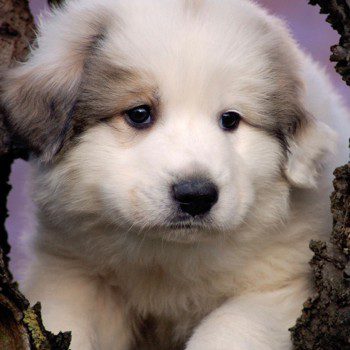
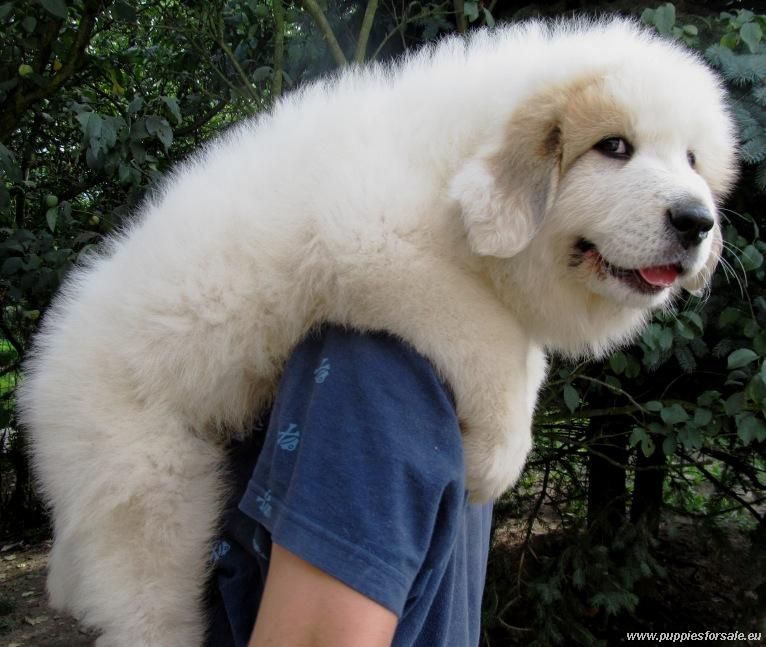
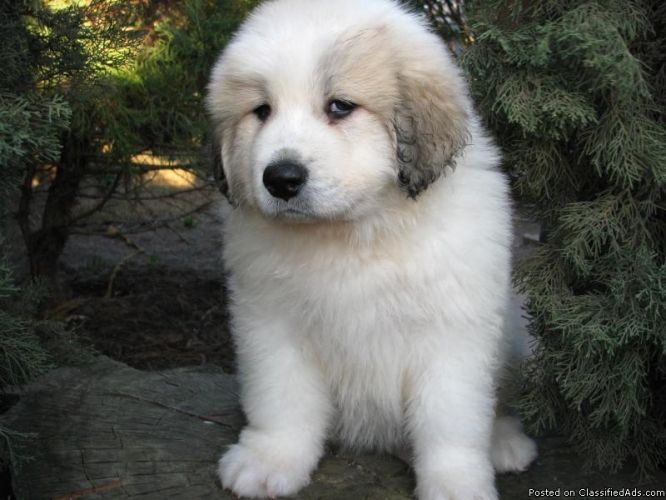



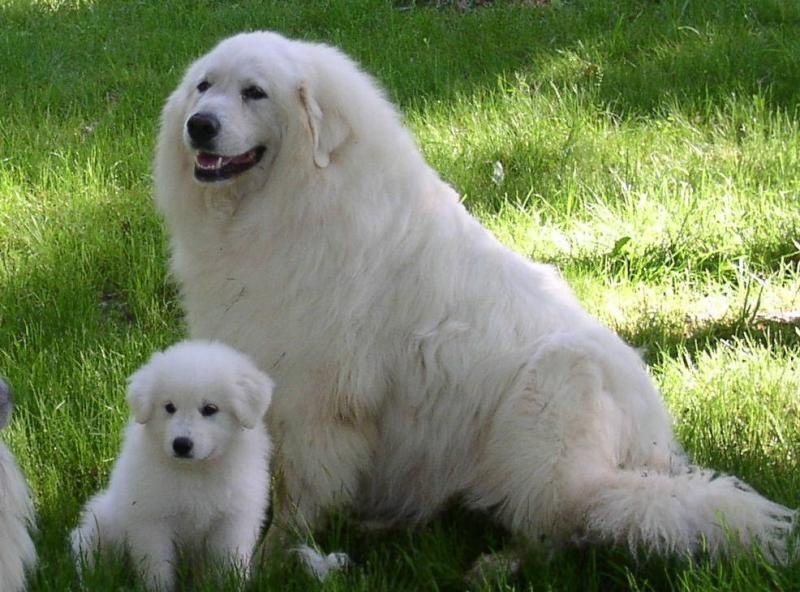
There are 4 to 7 puppies in a Pyrenean Mountain Dog litter. Births in bitches are easy, and outside intervention is rarely required, but in the early days, breeders closely monitor the producer – sometimes large mothers are able to crush a baby or two as a result of a careless turn.
- Going to the nursery to get acquainted with the puppy, ask the seller to show the entire litter. If there are no cardinal differences between the size and build of babies, this indicates a high quality of the offspring.
- Check out the legs of a Pyrenean mountain puppy. Look at the animal in the stance and movement, pay attention to the set of the limbs (they should be parallel to each other) and the presence of dewclaws – there should be two of them on each hind leg.
- Fluffy “hats” on the heads of puppies and large ears are normal phenomena for the breed. With age, the fluff on the head of the Pyrenees disappears, and the ears no longer look like “burdocks” against the background of a body that has gained weight.
- Require the breeder to weigh the Pyrenees you like. At two months, an exemplary baby should weigh at least 7 kg, and at three – about 14-19 kg.
- Look for a nursery that specializes in out-of-town growing. Pyrenean mountain dogs, bred in cramped apartments, are almost always unhealthy, rickety and mentally unbalanced individuals.
- Take a closer look at how the kids communicate with the breeder. If they willingly approach for affection and do not raise a squeal when they are picked up, this is a good sign. This means that the animals have a balanced psyche, and the owner treats the wards correctly.
- The puppy’s coat should be thick and fluffy from the first days of life. Do not believe the promises of the seller that as the Pyrenees with sparse wool mature, they will “increase” the required amount of shaggyness. This definitely won’t happen.
- Study the pedigrees of producers and find out if they were tested for dysplasia – in serious nurseries they do not save on veterinary examinations.
Pyrenean mountain dog price
In Russia, the breed is not represented as widely as in the USA or European countries, so you will have to spend time looking for a reliable nursery. The non-proliferation of the Pyrenees also affects their price tag. For example, buying a puppy with a pure pedigree, without malformations, will cost 900 – 1000$. Offspring born from a foreign sire will cost an order of magnitude more expensive – the seller will not forget to take into account the costs of traveling to another country and the time spent. Owners of well-publicized foreign kennels are very reluctant to mate their pets with Russian Pyrenees. Individuals with mediocre ancestors, exterior defects and those not examined for genetic ailments can be purchased cheaper – in the region of 500 – 600$, but in this case there is a high risk of going broke on treatment at a veterinarian.



